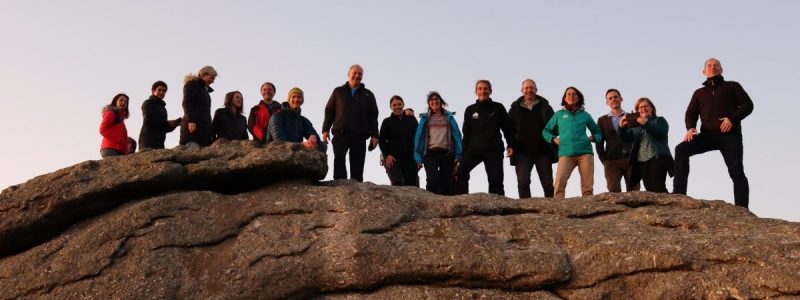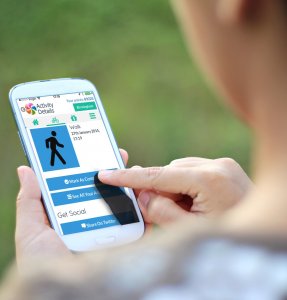- What makes a good smartphone app for outdoor recreation by John Walmsley and Lynn Crowe
- BetterPoints Birmingham Active Parks Programme by Hannah Bowden - Programme Director BetterPoints
- Understanding where people go in the countryside by Chris Panter & Durwyn Liley - Footprint Ecology
- Digitising paper based walking trails onto Apps by Arthur LaCour - Handheld Tours
Journal Forward
Edition 27 forward by Lynn Crowe, Professor of Environmental Management, Department of the Natural and Built Environment, Sheffield Hallam University
In this edition of the ORN journal, we focus on the value of digital data and new technologies within outdoor recreation. Many of these papers are a result of presentations given at a research conference in March 2016 at Sheffield Hallam University. The conference aimed to explore the opportunities created by the growth in these new technologies to research and understand the outdoor recreation market. We shared innovative approaches, and some of the practical and methodological issues arising around the use of these techniques in the field. All presentations can be seen on the ORN event web page (https://www.outdoorrecreation.org.uk/events/orn-research-seminar-digital-data-and-outdoor-recreation-research-tools-and-applications/).
The underlying premise of the conference was that technology is now engrained in every aspect of our lifestyles. Young people in particular do not separate `on line` and `off line activities – they are permanently `connected`. OFCOM 2015 data suggests that 66% of adults own a Smartphone in the UK, and this rises to 90% in the 16-24 age group. The average Smartphone daily usage amongst adults is now 126 minutes (including 65 minutes internet use). Whilst this makes some of us uneasy, it also presents a range of exciting opportunities to increase access to outdoor opportunities, to enhance the visitor experience, and to learn from digital data to improve the management of sites.
Several of the papers in this journal focus on ways of using technology to increase people’s access to outdoor opportunities and promote greater participation. Hannah Bowden (from the company Betterpoints) explains how they use mobile apps and incentives as rewards to encourage positive behaviour change and greater use of local parks. This same technology also allows people to self monitor their own behaviour and can provide access to activity data for all users.
This use of digital data to better understand activity and behaviour was a recurring theme during the conference. Chris Panter and Durwyn Liley (from Footprint Ecology) demonstrate in their paper how technology such as time lapse photography and the GPS tracks of smart devices, can be used to understand access patterns, visitor behaviour and inform better management. The `hands on` demonstration by researchers at Sheffield Hallam University and other organisations, of a number of innovative technologies for measuring activities was a fascinating aspect of the conference in March. We were shown the results from field lab experiments as well as having an opportunity to try out some of the new wearable devices. For those of us not used to this new personalised technology, this was a fascinating opportunity (and more information can be obtained via SHU’s Outdoor Recreation Research Group – www.shu.ac.uk/research/specialisms/outdoor-recreation-research-group).
But new technology can be used for more than just collecting data – useful though this is. It can also be used to add to the visitor experience. Arthur La Cour, from Handheld Tours, explains how they develop interactive interpretive visitor experiences, producing app-based self guided tours for Smart devices (tablets and telephones). Again – anonymised data analytics can be captured to demonstrate the use of these resources for their clients. John Walmsley’s workshop at the conference encouraged participants to explore similar apps used at two wildlife sites, in order to evaluate what makes for a good user experience. As his paper concludes, it’s not just the challenges of the technology which need to be addressed – producing good interpretive material remains an essential skill, and any interpretation should still support the bond between the person and the natural environment.
The use of mobile information and communications technologies could be the next great leap forward in encouraging more people to participate in outdoor recreation. The recent success of `Pokémon GO` (the smartphone game which allows you to hunt and capture virtual creatures in the real world) demonstrates that the games industry is moving at a pace that other sectors struggle to match. But are there still dangers – of becoming trapped in a virtual world, rather than keeping our eyes on the trail ahead and the landscape around us? We need to understand what the ingredients are that make for a compelling user experience and the creation of real added value for outdoor recreation managers. The answers to these questions can help not just app designers and their potential customers, but outdoor recreation, tourism, land management, and conservation organisations too.

